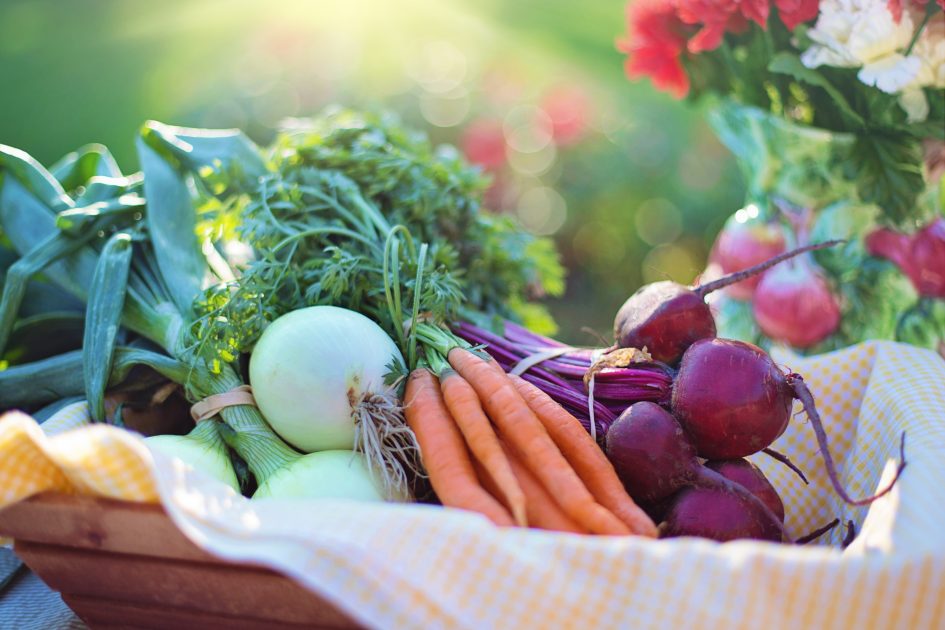Not long ago, organic food could only be found in health food stores. But today, due to increasing demand, organic options can be found in almost every major supermarket in America. Having so many options to choose from can cause confusion in the grocery aisle, such as what is the difference between organic and non-organic spinach? Are there certain foods that should always be purchased organic? What foods are OK to buy non-organic? Find out the answers to these questions and more by reading on.
What Does “Organic” Really Mean?
According to the Mayo Clinic, when the word “organic” is used, it refers to the way farmers grow and process agricultural products, such as fruits, vegetables, grains, dairy and meat. Organic farming practices are designed to meet the following goals:
- Enhance soil and water quality
- Reduce pollution
- Provide safe, healthy livestock habitats
- Enable natural livestock behavior
- Promote a self-sustaining cycle of resources on a farm
Plants and animals labeled “organic” have not been treated with:
- Pesticides
- Herbicides
- Antibiotics
- Fertilizers
- Ionizing radiation
- Growth hormones
- Genetic engineering
- Sewage sludge
Organic crop farming materials or practices may include:
- Plant waste left on fields (green manure), livestock manure or compost to improve soil quality
- Plant rotation to preserve soil quality and interrupt cycles of pests or disease
- Covering crops that prevent erosion when parcels of land are not in use and plowing into soil to improve its quality
- Mulch to control weeds
- Predatory insects or insect traps to control pests
- Certain natural pesticides and a few synthetic pesticides approved for organic farming (They are used rarely and are only a last resort in coordination with a U.S. Department of Agriculture [USDA] organic certifying agent.)
Organic farming practices for livestock include:
- Healthy living conditions and access to outdoors
- Pasture feeding for at least 30 percent of the livestock’s nutritional needs during grazing seasons
- Vaccinations
- Organic feed for animals that is free of growth hormones and antibiotics
When selecting organic food, look for labels that state “USDA Certified 100% Organic.” Labels with “Organic” or “Made With Organic Ingredients” may still contain non-organic ingredients.
If a food label says “USDA Organic,” it contains at least 95 percent organic ingredients and means a government-approved expert has inspected the farm where it was produced to ensure the farmer followed USDA requirements. Foods labeled otherwise, such as “natural,” don’t meet the USDA’s standard for being considered organic.
The United States Environmental Protection Agency (EPA) limits the amount of pesticide residue that can be found on food, but many choose to eat organic produce to further reduce the chances of pesticides on and in their food. Washing your fruits and veggies under tap water will remove most pesticide residue found on the skin of produce but won’t reduce the amount of pesticides that have been absorbed by the plant’s roots and into the flesh.
It’s important to remember that you don’t need to purchase solely organic food to make an impact on your wellbeing. An alternative to purchasing organic food is to focus on foods that are local, from nearby farmer’s markets, are farm-raised or are on the Environmental Working Group’s (EWG) Clean 15 list, which refers to the fruits and vegetables that are the least contaminated by pesticide use.
Deciphering Food Labels
“Natural”
- There isn’t an official definition by the U.S. Food and Drug Administration (FDA) currently, but foods labeled “natural” are generally thought to contain no added color, artificial flavors or synthetic substances.
“Organic”
- Animal products labeled “organic” cannot be given antibiotics or growth hormones, and plants cannot be grown with conventional pesticides or fertilizers, or have any exposure to genetic engineering or irradiation.
- Only 95 percent of ingredients must meet these requirements for a product to be labeled “organic.”
“100% Organic”
- This product is made entirely from organic ingredients.
“Made With Organic Ingredients”
- At least 70 percent of ingredients in this product are organic.
“Free-Range” or “Cage-Free”
- Animals cannot be contained in any way and must be allowed to roam freely for meat products to have this label. However, this label is minimally regulated and is not as strict as “organic” labeling.
“Grass-Fed”
- For a product to be labeled “grass-fed,” the animal is raised primarily on ranges rather than on a feedlot, but the animals can still be contained.
“Fresh”
- “Fresh” means the food is raw or unprocessed, never frozen or heated, and does not contain preservatives.
Genetically Modified Organisms (GMOs)
- A label describing food as containing GMOs means the DNA of the plant has been altered in some way – often referred to as genetic engineering. The only way to avoid GMOs is to buy “100% Organic” items. However, it is important to note that the use of GMOs might not be completely bad. A popular use of GMOs is to give plants a gene that allows them to be insect-repellant, which might also lead to reduced use of pesticides. Another example of GMO use is the FDA recently approved potatoes that don’t bruise and apples that don’t brown.
Interested in More?
Check out these resources:
Find Local, Organic Farms and Businesses
Download the Non-GMO Project Shopping Guide App
The Environmental Working Group (EWG)
- View a ranking of produce with pesticides.
WebMD: Understanding Food for a Healthier You


